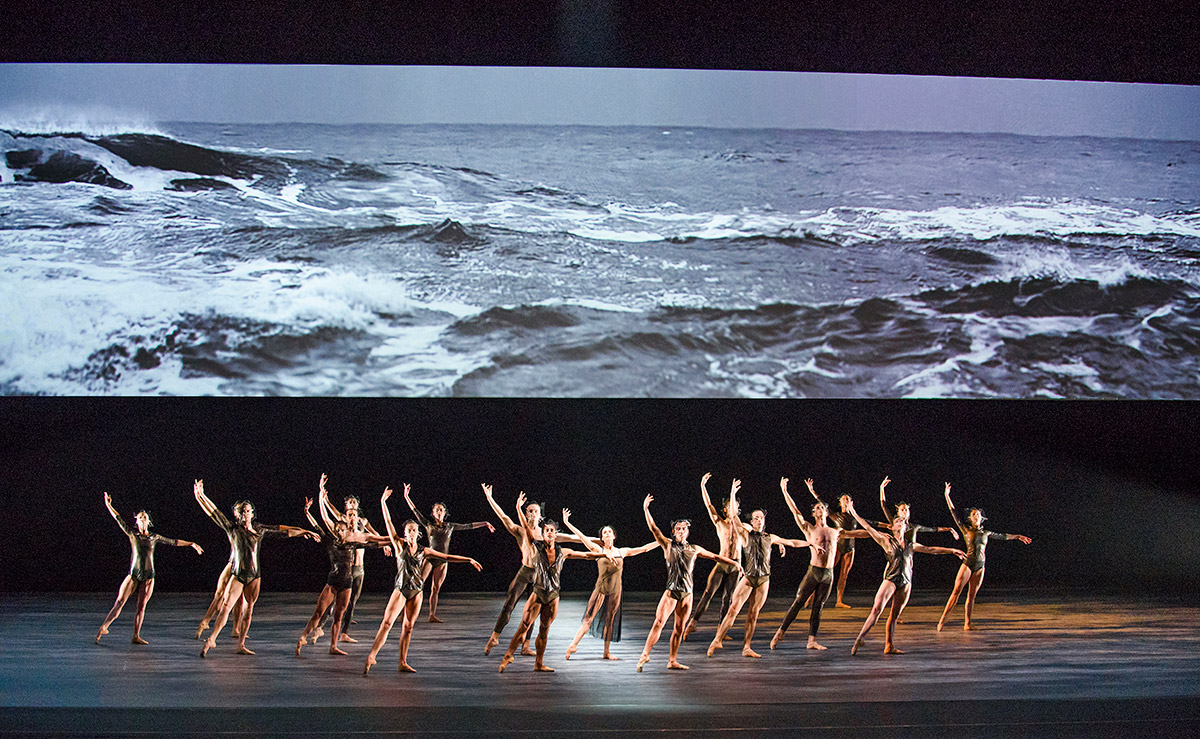
Part of the Royal Opera House #OurHouseToYourHouse series. More details
The Royal Ballet
Woolf Works
★★★★★
Streamed archive recording of 2017 performance at London’s Royal Opera House. Relay 26 June 2020
Available to stream until 9 July 2020
www.roh.org.uk/tickets-and-events/woolf-works-stream-details
www.roh.org.uk/streaming
www.roh.org.uk
Wayne McGregor’s first full-length creation for the Royal Ballet, Woolf Works, inspired by Virginia Woolf, remains one of his best works to date. It seemed like a breakthrough piece for McGregor in 2015, a departure from his usual abstract work and dance vocabulary and was well received at the time. Strangely, I like it more on film.
The first part, I Now, I Then, is good, referencing Woolf’s novel Mrs Dalloway; the last part is very good, Tuesday, based on The Waves and focusing on her eventual suicide; the middle part, Becomings inspired by Orlando, a time-travelling poet, just doesn’t do it for me. The icing on this particular confection, is Alessandra Ferri in the central role in the first and last parts, alongside a cast of phenomenal dancers, sometimes difficult to identify under heavy make-up unless you recognise their legs.
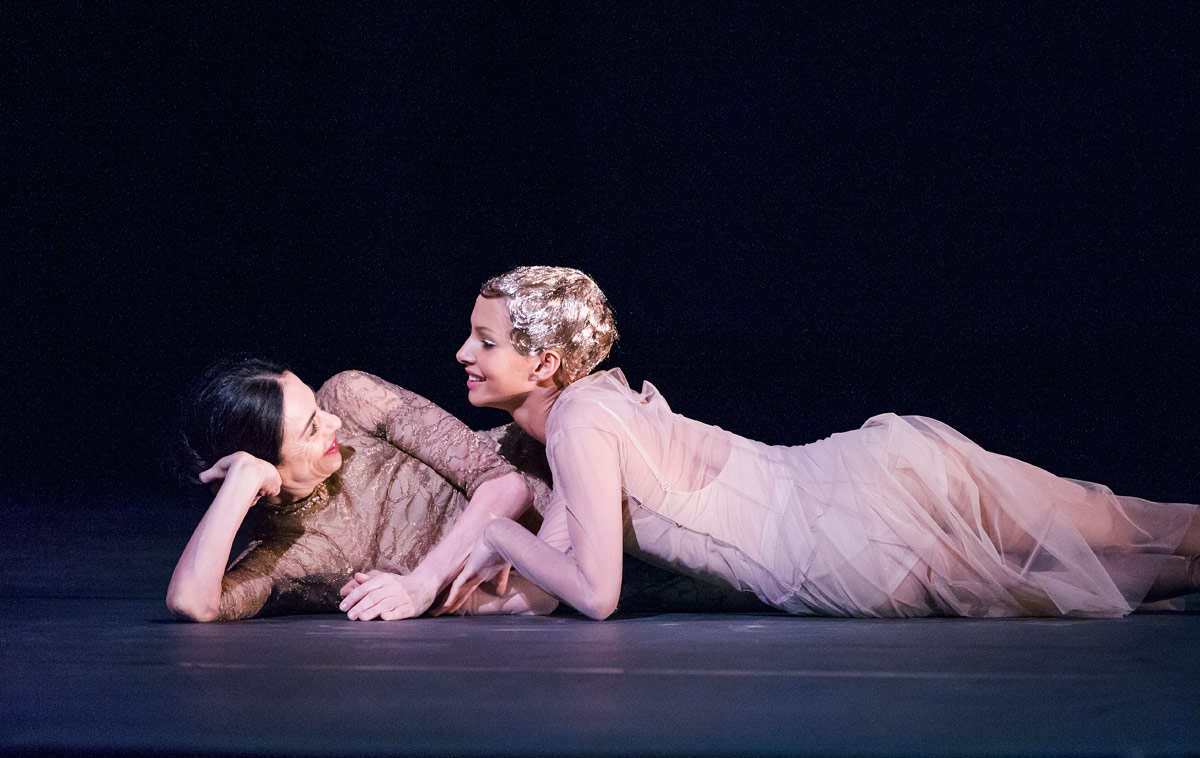
© Tristam Kenton, courtesy the Royal Opera House. (Click image for larger version)
I have always suspected that McGregor is almost too clever for his own good – unable to translate his notions into digestible forms of dance that the viewer can understand without reading pages of programme notes. He’s a great collaborator, and this shows in all his works, but I have doubts (marginally dispelled in the first and last sections of Woolf Works) about his ability to create any kind of aesthetic vocabulary for a classical ballet on classically trained dancers. Lots of people will disagree with me and I think that dancers who have worked with him will be the first in the queue, but I lose interest when a piece is populated with jerky, ugly, hyper extensions and a lack of connection to the music.

© Dave Morgan, courtesy the Royal Opera House. (Click image for larger version)
In I Now, I Then, and you don’t need to have read Mrs Dalloway, but it might help if you have. Ferri, the consummate artist, tells us what we need to know and feel, through her face and her body. In her fifties, her physique is a monument to perfection and one to aspire to as a dancer. Her face and eyes have always been the window to her soul and her intelligence carries the production. It’s as if she is reminiscing about her past, with Beatriz Stix-Brunell as her youthful self. Francesca Hayward, absolutely exquisite as the friend who steps into sapphic territory, Gary Avis as the steadfast husband and Federico Bonelli as a lover, are all superb. Since the characters are not named on the credits, misunderstanding is probably rife, but on the other hand, you may have studied Mrs Dalloway at A level and still not fully get to grips with the representation. I guess you have to make up your own mind if the lack of clarity is bothersome. I believe that Edward Watson is Septimus Smith, the soldier going through PTSD. He is convincingly disturbed and dances with his inimitable fervour and passion. There is a pas de deux with Akane Takada, his sister, but the most interesting duet is with Calvin Richardson, a friend/soldier, his partner in trauma – the man who understands his acutely disturbed mental state. I later conclude he could have been his lover. All this is held tenuously together by the fabulous dancers, an interesting set design (McGregor, Ciguë, We Not I), some film by Ravi Deepres, Lucy Carter’s stunning lighting design, Max Richter’s evocative score but mostly by Ferri’s magnetic presence.
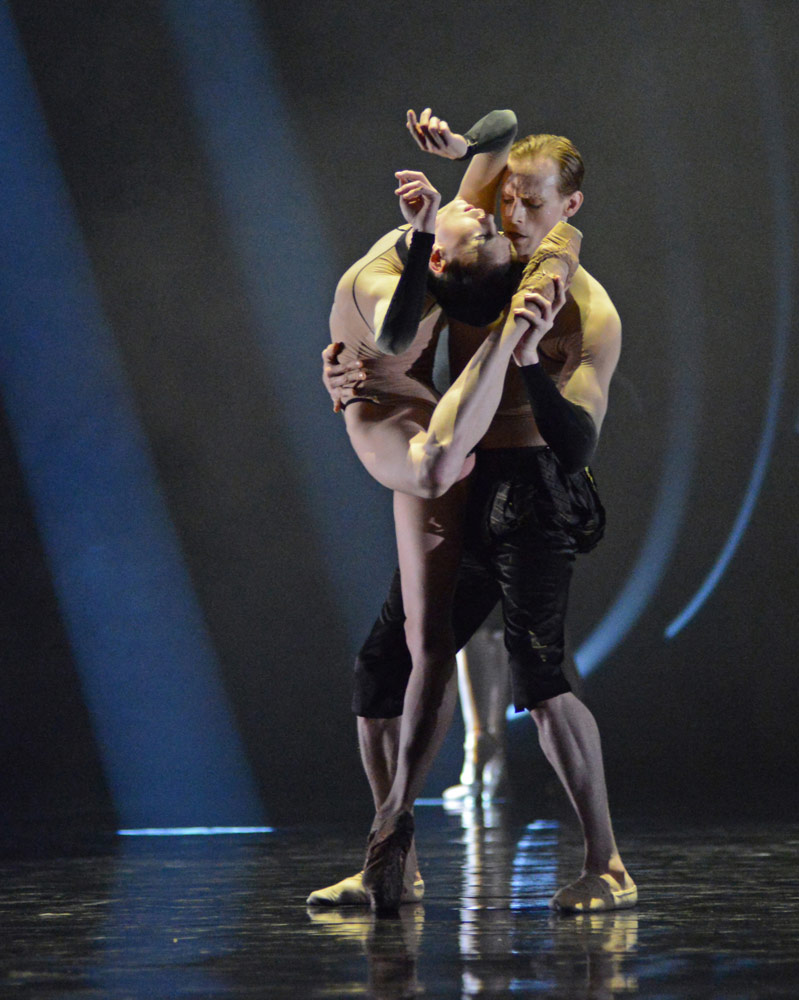
© Dave Morgan, courtesy the Royal Opera House. (Click image for larger version)
When I saw the premiere of Becomings in 2015, I found it baffling. Supposedly based on Orlando – the costumes are ravishing (Moritz Junge) by the way – we’re taken, I assume, on a journey through time, with an Elizabethan theme and a gender fluid experience (Orlando starts off as a man and later becomes a woman) – a theme that is surprisingly topical (the book was first published in 1928). But the entire stage seems to be confused, flooded with frequent changes of costume, an androgynous mishmash of bodies and identity crises. There is almost no structure. The stunning Eric Underwood threatens to take us all by storm with his crinoline. Natalia Osipova can’t seem to make up her mind about very much. Then there’s the fact that energy levels are so high that the dancers look as if they are overcome with ADHD. Frenetic, repetitive, aggressive, distorted movements, spiky and flappy arms, legs extended past 180 degrees – often at the camera – and some 1980s disco moves all start to become unwatchable and have no musical momentum. Osipova, who probably loves this kind of challenge, looks slightly demented towards the end and the whole thing goes on too long. If we hadn’t been told that it was based on Orlando, I would say it’s a bit of a misnomer.
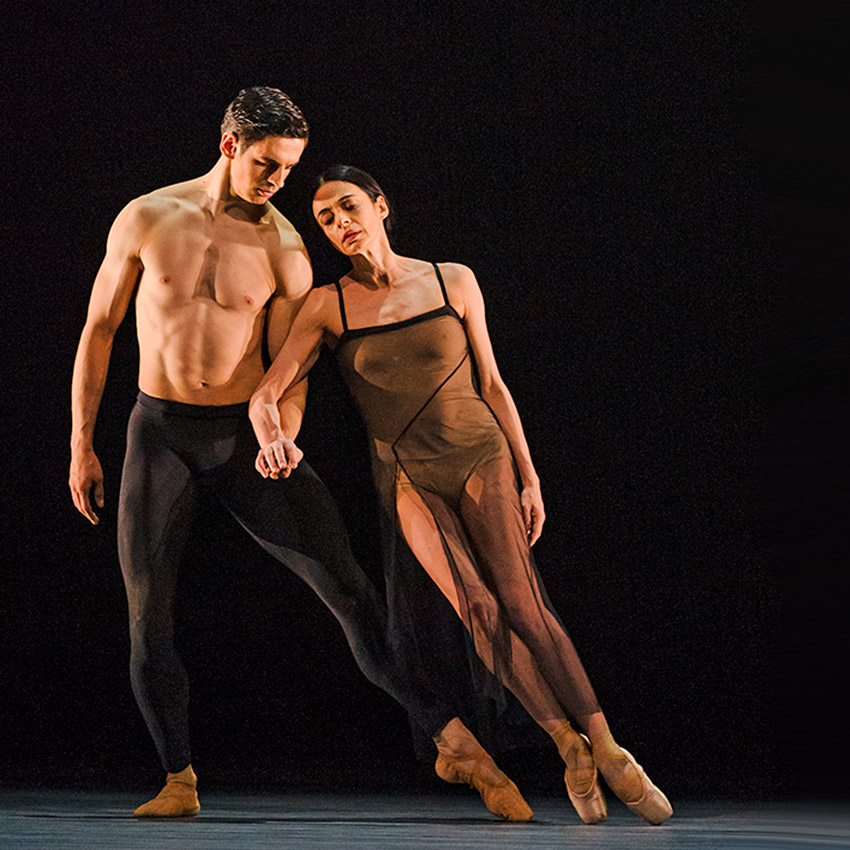
© Tristram Kenton, courtesy the Royal Opera House. (Click image for larger version)
Woolf Works is saved by the third part of the triptych, Tuesday. It opens with a recording of Gillian Anderson reading the suicide letter that Woolf wrote to her husband, who she clearly loved, saying her farewells. It’s profoundly moving and with a monochrome backdrop of gently undulating waves it feels like a poignant introduction to her demise. There are two exceptionally sensual duets between Bonelli and Ferri, the last one leads into the end of the ballet. In between there is a vast corps de ballet, some children, which could be Woolf remembering her childhood, and a close friend, Sarah Lamb, who appears to hold the key to her memory. There is real choreography and steps that are meaningful and it’s about now that McGregor transcends into a completely different zone. Emotionally, it taps much more deeply into the fine line between reality and performance. Lamb is particularly touching in this, as she cradles Ferri with an ethereal tenderness. The corps suffer with a lack of structure and focus but are nevertheless rather good. Headdresses aside (coral or some kind of wireless sound structure?) I feel that McGregor often loses his way with large groups and yet, his simple tendus, en masse, are quite effective. Throughout this, Ferri remains extraordinarily alluring and like the waves, her movements echo those undulations. Musically too, Richter finds the ebb and flow, the swell that takes it all to a climax. And when Bonelli, such a sensitive partner, lays her down at the end, we all feel a sense of tremendous loss. It’s worth watching for the final act.













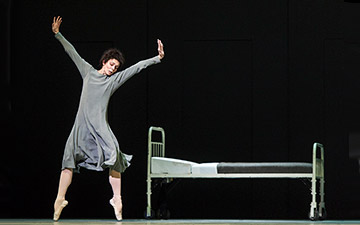

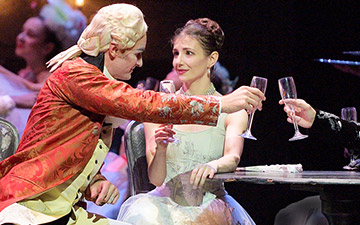

You must be logged in to post a comment.